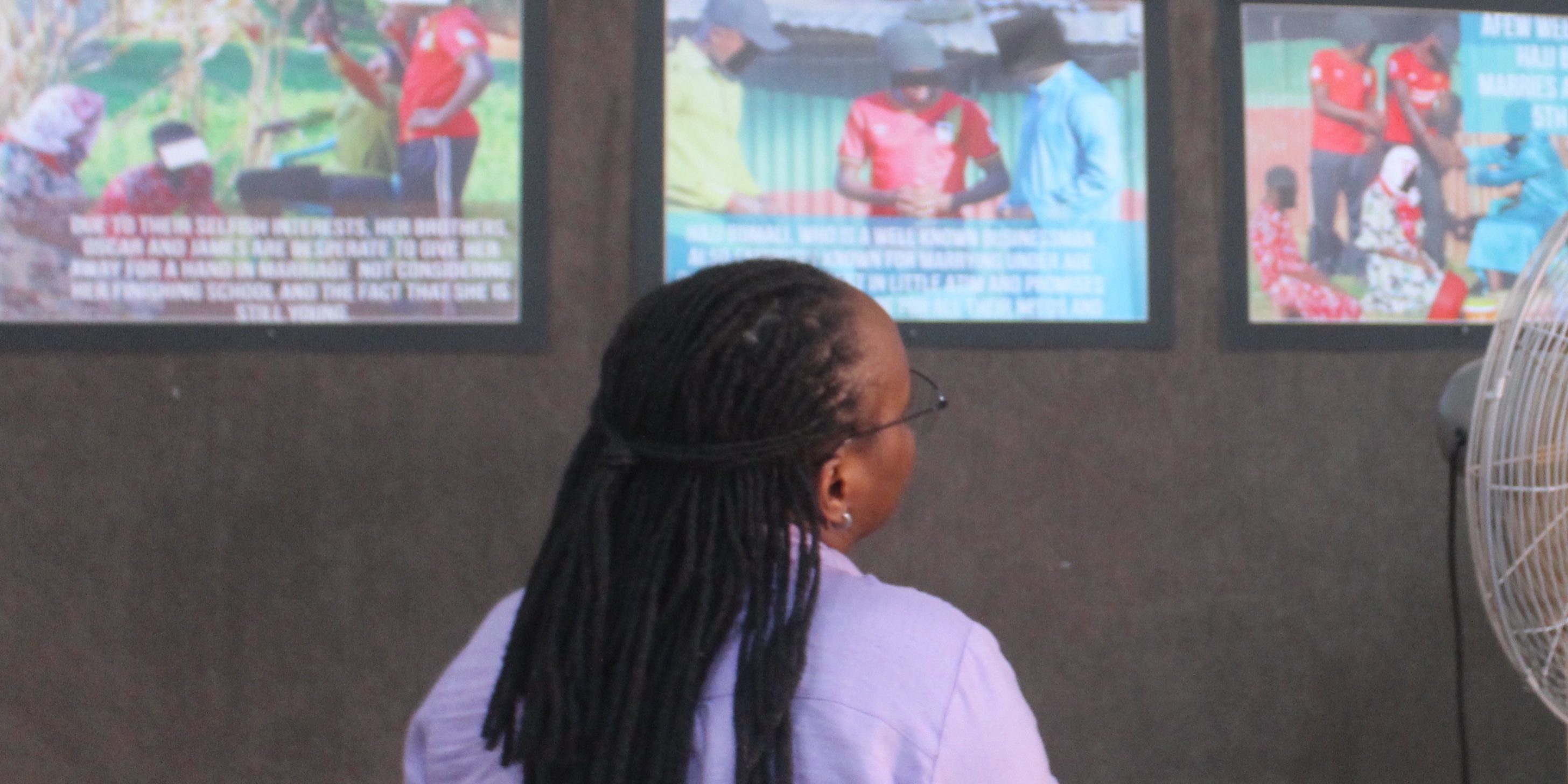An indoor exhibition featuring photographs by journalists that showcase the stories of women and girls facing challenges in accessing Sexual and Reproductive Health services in Uganda was on display at the Circular Design Hub in Kampala this Tuesday.
The exhibition, organized by Akina Mama wa Afrika, a feminist Pan-African leadership development organization, commemorated the International Day of Action for Women’s Health. This day, celebrated globally on May 28th, serves as a reminder that women have the right to live healthy lives free of discrimination and violence.
The exhibition featured over 40 portraits of rural individuals taken by six journalists, drawing attention to Sexual and Reproductive Health Rights (SRHR) stories that are often underreported by the media. The realities spotlighted at the exhibition included limited access to menstrual health, family planning, challenges faced by people living with disabilities, teenage pregnancies, and forced marriages.
From teen girls using clothes during their periods to those using seemingly old panties hanging loosely in school bathrooms during emergency periods, to a mother caring for her child born with a spina bifida health condition, to teen girls taking care of their siblings, the stories were both poignant and eye-opening.
Sarah Biryomumaisho’s photo story tells the life of a Mutwa mother of three children, pregnant with another, and living in a small mud house she shares with 10 other extended family members. Biryomumaisho explores the voice and perception of the Batwa community about modern family planning.
“She told me she doesn’t use family planning because she, like most Batwa people, believe that they are facing extinction and therefore they choose to have as many children as they can even when they lack the resources to take care of them,” said Biryomumaisho.
According to the 2014 National Population and Housing Census, there are 6,200 Batwa, making up 0.2% of Uganda’s population. Uganda’s current population is estimated to be about 49 million in 2024, according to the World Population Review.
However, Biryomumaisho also noted that in addition to negative perceptions about family planning, these services are nonexistent in the hilly areas of the Batwa community. “Even if one wanted to use family planning, there is no health center in the Batwa community, and they would need to travel a long distance to access them,” she said.
The photo story by Jude Watsaba, documenting Atim, a 14-year-old girl being handed over for marriage to Haji Bumali to be his fifth wife, to the moment she is three months pregnant with twins, was the most compelling of the stories at the exhibition. It re-emphasized the power of visual storytelling and the need for media to focus on teenage pregnancy stories.
At 25%, Uganda has the highest rate of teenage pregnancy in East Africa, according to a 2022 report by UNICEF, with girls between the ages of 15-19 years either having a child or being pregnant. “Yet these stories are not getting the public attention they need,” said Rachel Mugarura, a media and communications trainer at the African Center for Media Excellence (ACME), during a panel discussion at the event.
A study commissioned by Akina Mama wa Afrika and conducted by ACME highlighted the limitations and biases present in current media portrayals of SRHR, which restrain diverse voices and perspectives. The study, carried out between January and June 2023, identified 735 articles discussing SRHR across newspapers, television, and online media platforms. Newspapers published half of these stories, with the Daily Monitor leading.
The report showed that sexual orientation and gender identity, maternal health, and sexual and gender-based violence and harmful traditional practices were the top three most covered SRHR stories.
Apart from photography, exhibition attendees were treated to Gloria Kiconco’s poetry performance of a non-fiction poem titled “Redacted,” based on SRHR issues. The poem highlighted the challenges of motherhood, mental health, self-actualization, and the alienation from society’s expectations of self-expression.
The exhibition not only celebrated the resilience and voices of women and girls in Uganda but also called for greater media attention and action to address the critical issues surrounding sexual and reproductive health rights.

